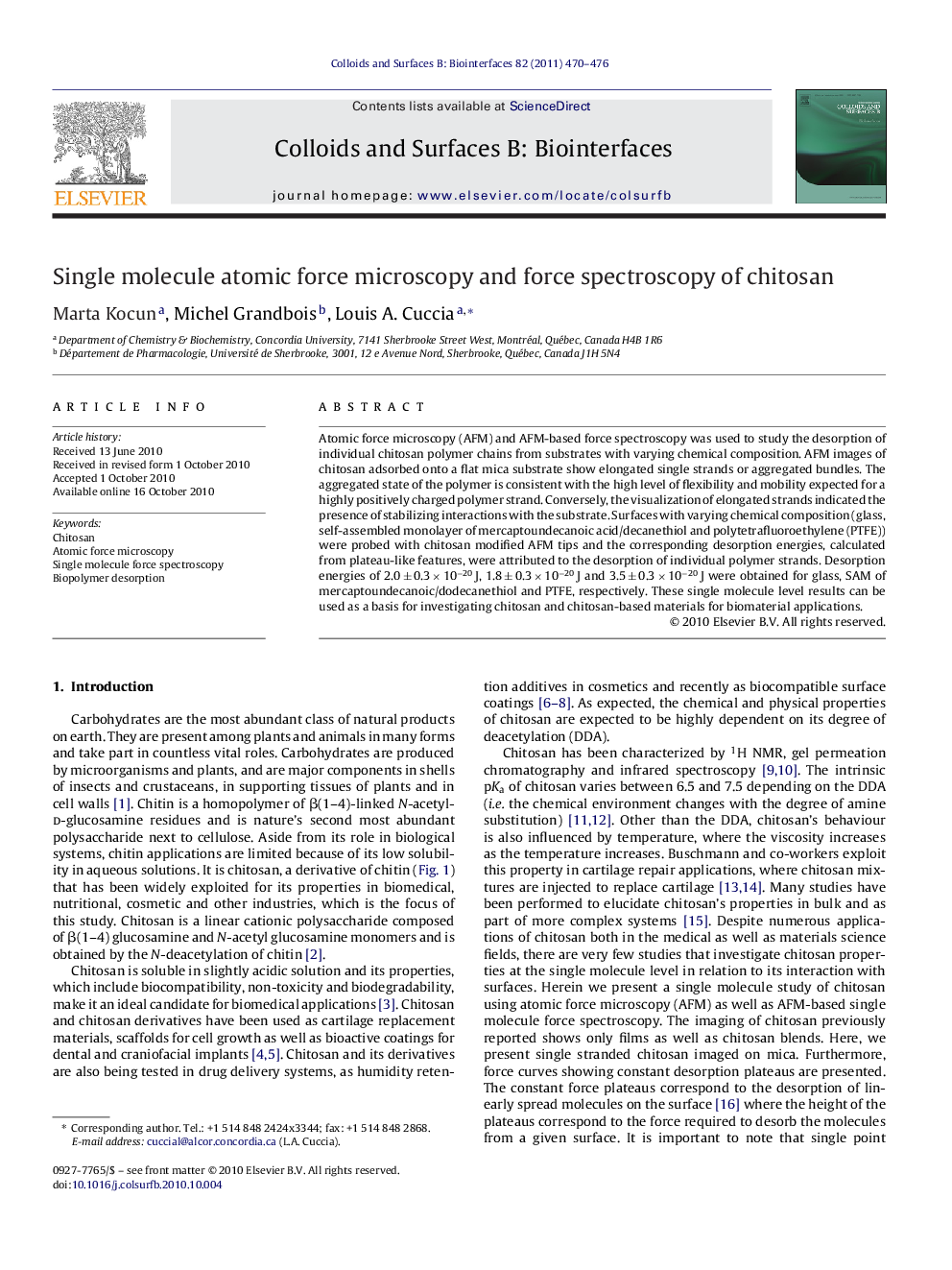| Article ID | Journal | Published Year | Pages | File Type |
|---|---|---|---|---|
| 601339 | Colloids and Surfaces B: Biointerfaces | 2011 | 7 Pages |
Atomic force microscopy (AFM) and AFM-based force spectroscopy was used to study the desorption of individual chitosan polymer chains from substrates with varying chemical composition. AFM images of chitosan adsorbed onto a flat mica substrate show elongated single strands or aggregated bundles. The aggregated state of the polymer is consistent with the high level of flexibility and mobility expected for a highly positively charged polymer strand. Conversely, the visualization of elongated strands indicated the presence of stabilizing interactions with the substrate. Surfaces with varying chemical composition (glass, self-assembled monolayer of mercaptoundecanoic acid/decanethiol and polytetrafluoroethylene (PTFE)) were probed with chitosan modified AFM tips and the corresponding desorption energies, calculated from plateau-like features, were attributed to the desorption of individual polymer strands. Desorption energies of 2.0 ± 0.3 × 10−20 J, 1.8 ± 0.3 × 10−20 J and 3.5 ± 0.3 × 10−20 J were obtained for glass, SAM of mercaptoundecanoic/dodecanethiol and PTFE, respectively. These single molecule level results can be used as a basis for investigating chitosan and chitosan-based materials for biomaterial applications.
Graphical abstractFigure optionsDownload full-size imageDownload as PowerPoint slideResearch highlights▶ Chitosan forms elongated single strands on mica. ▶ Chitosan strands desorb from glass, PTFE and SAM surfaces with constant force. ▶ Surface chemistry governs the magnitude of force required to desorb chitosan. ▶ Surface roughness can influence the uniformity of chitosan constant force plateaus.
